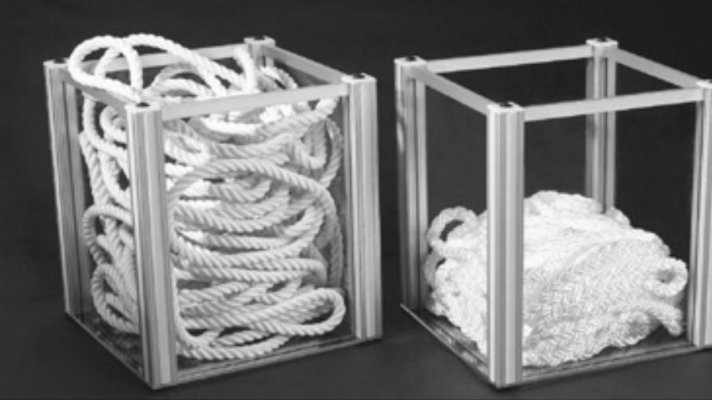Nylon, also known by its chemical name polyamide, has been widely used in marine mooring and towing lines since the 1950's. It has the lowest stiffness modulus, and thus it is favoured where high extension is very important. It is the strongest of the common fibres when dry. However, wet nylon fibre loses about 10% of its strength, and wet nylon ropes can lose up to 20% of their strength. Wet nylon ropes also suffer strength loss due to creep and internal abrasion during tension cyclic loading.(Flory, 1982) The resulting short service life of large nylon ropes generally makes them unsuitable for permanent deep water moorings.
Polyester ropes are very durable in cyclic tensile fatigue loading. (Parsey, 1982, 1985) Very strong polyester rope with relatively high modulus can be made with the newer high-quality polyester fibres now available. They can be as strong as nylon when dry. Polyester ropes do not lose strength when wet and are generally stronger than nylon in wet condition. Thus polyester ropes are now supplanting nylon in many critical conventional marine applications and are good candidates for deep water mooring systems.



